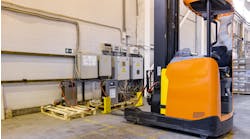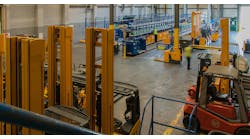"It looks like a battery compartment. Go get the screwdriver and we'll replace them," I said, not looking at it too closely. As we undid the panel and separated the bottom from the body of the car, I had one of those "Uh-Oh" moments when you realize you should have paid closer attention to something but now it's too late.
There were several odd clicks from inside and I quickly tried to squeeze the two halves back together. But they no longer fit. What had been only seconds before a late 1980s-style Corvette with a pop-up rear spoiler, a front end that flipped around and wheels that folded down to transform it into a speedboat, was now a handful of loose plastic pieces and metal springs. To put it back together, as I would soon figure out, I would have to simultaneously align nine pins and hold four springs in place, springs which had a habit of snapping out onto the floor where they blended into the speckled carpet like camo-clad marines in a jungle.
Made in Hong Kong before toys were put together with special fasteners to thwart youthful curiosity (and parental ineptitude), the designers of the toy car never intended for those pieces to be unscrewed. Their focus ended at assembly. It wasn't too long ago that the focus of industrial equipment designers ended at assembly as well.
Ask any service technician who has been around for a while how much time it currently takes to access, remove and replace a component in a lift truck compared to 20 years ago. They will tell you that their job is much easier today. Although the occasional align-nine-pins-and-four-springs reassembly process remains, manufacturers have begun to listen to customers' demands for material handling equipment and technology that is designed from the outset to be easy to maintain and service. As a user of such equipment, you must make sure that such concerns aren't overlooked when procurementdecisions are made. Ease of maintenance takes many forms. At its most basic level, daily status and operability checks should only require a glance at highly visible gauges or other indicators. Doors and quick-release hatches should speed access to areas and parts that require servicing most frequently. Subassemblies should be designed for rapid swap out should there be a malfunction. Color-coded labels and other visual cues will indicate where components are located and how they should be serviced (which panels to open and which screws to remove, for example, and which ones to leave alone). To ensure that periodic maintenance is performed and catastrophic failures are prevented, instrument panels and controllers should have built-in wear and service indicators. Use of industry-standard fasteners, tools and components where possible can also make repair and part replacement easier.
All of this reduces service time and labor, which lowers maintenance and total operating costs. Still, the labor cost savings from improved serviceability is often dwarfed by the productivity gains from improved equipment uptime. This, in the final analysis, is what users care most about. If you spend money on equipment and technology, you want it to be available. This is true whether you are operating a piece of equipment, running a software program or managing a facility. Every second that an asset is out of service is a second when it could be generating a return on your company's investment.
After letting it sit overnight I managed to put the toy car back together again. First, I had to figure out the exact sequence in which the parts had originally been assembled, and then fit them back together one by one. I even managed to fix the mechanism, which had been jammed, that shoots little red disks out of a slot in the car's front grill. That really made my son's eyes light up. Equipment suppliers should make their customers so happy.


